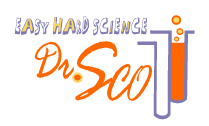Really Easy Chemistry Course for High School
Our easy high school chemistry Self Paced courses have teacher support by email, grading, and certificate.
Chemistry Video Course: Intro to Chemistry
Introduction to Chemistry is the easiest online chemistry class you’ll find. The Self Paced chemistry course has 185 videos (25+ hours total) plus 36 printable pdfs including worksheets, answer keys, and class notes. Topics are listed below.
What's Included:

Complete Course Materials

185 Chemistry Videos (25+ hours)

Grading and Certificate
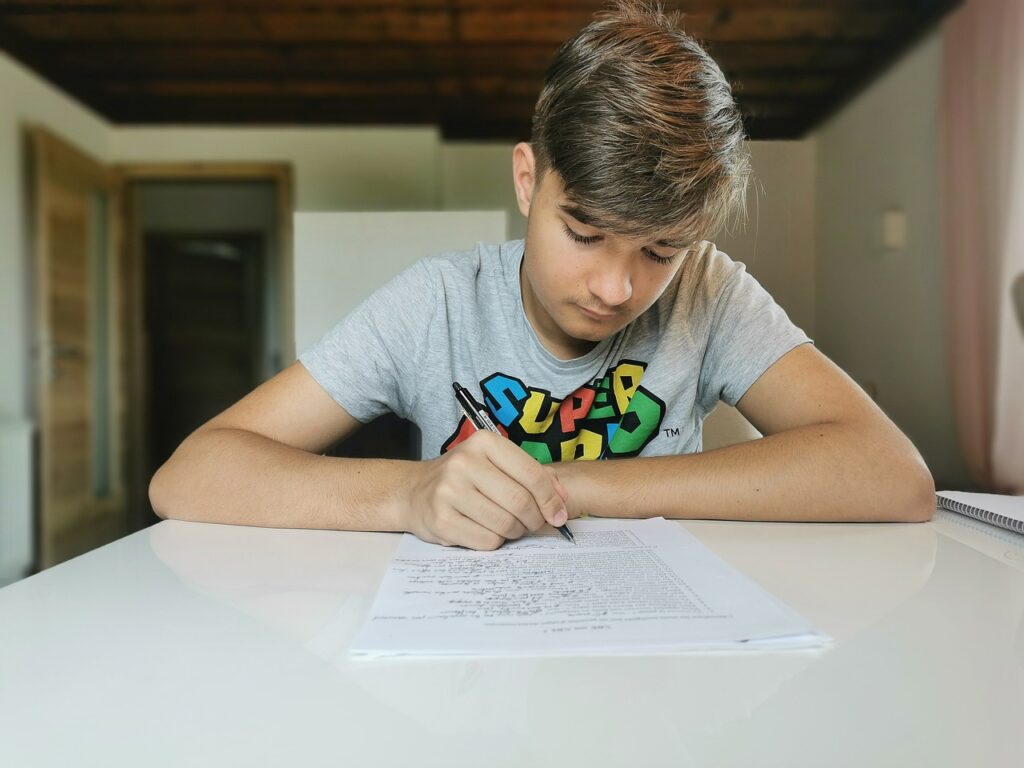
Introduction to Chemistry
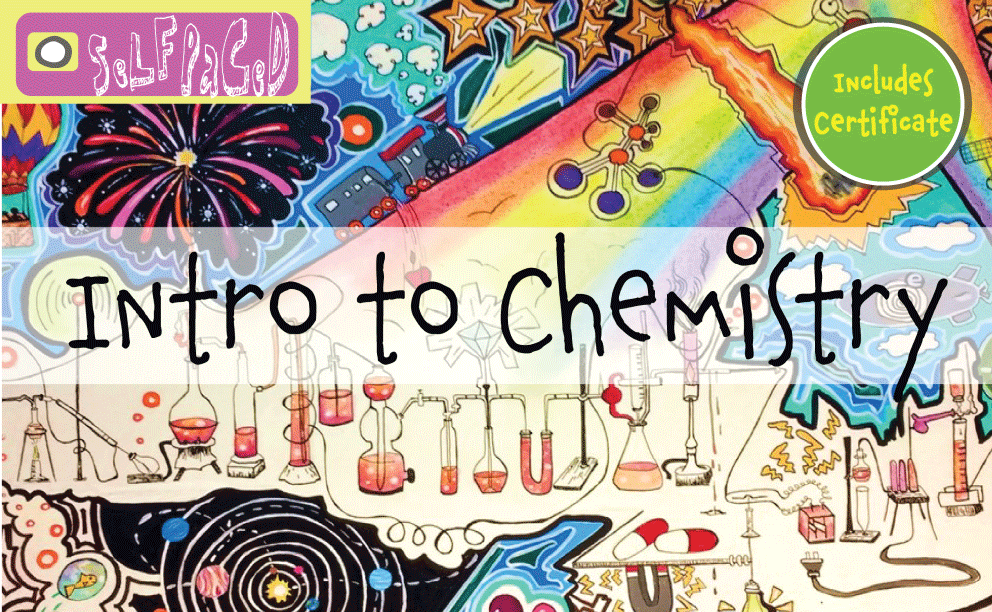
Get unlimited access to all of our high school science courses for a low monthly membership fee.
Chemistry Video Courses for High School: Summary
Our fun chemistry video courses for high school are organized into a series of 3 courses with progressively more challenging chemistry topics. Each course is about half a school year (a semester) in duration.
The first Self Paced course is called Introduction to Chemistry. These fun chemistry videos start at the beginning. They cover everything you really need to know for success with high school chemistry topics.
The next set of videos is called First Semester Chemistry. It continues from the previous video course into the core high school chemistry topics. The course will also prepare learners for that critical first semester of college level science classes, which is what the “First Semester” in the course name refers to.
The next set of chemistry videos is called Second Semester Chemistry. It continues into the advanced high school chemistry topics and experiments that would often be covered in an honors chemistry class or an AP chemistry class. Most students won’t encounter these topics until the second semester of college, and it’s not necessary to complete this course to get high school credit for chemistry.
The courses are formatted as semester length (half year) courses, and we suggest taking 2 of the 3 chemistry courses to complete a “normal” school year. Beginners can take Introduction and First Semester for a complete year of chem, while advanced learners can take First Semester and Second Semester to complete a year. There’s more specific info about the topics covered below.
Chemistry Video Course: First Semester Chemistry
First Semester Chemistry videos and worksheets cover the fundamental chemistry lessons you need to know for high school and the first semester of college. Topics are listed below.
What's Included:

Complete Course Materials

230 Chemistry Videos (35+ hours)

Grading and Certificate
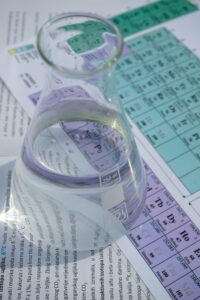
First Semester Chemistry
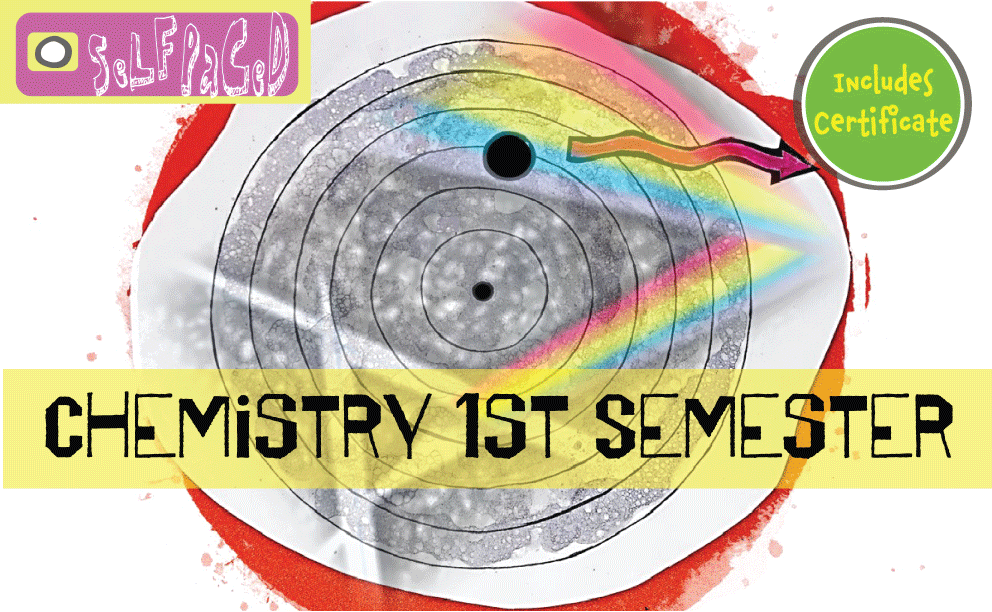
Your Online Chemistry Teacher

Hi, I’m Dr. Scott, the course instructor for Introduction to Chemistry, First Semester Chemistry, and Second Semester Chemistry.
I’m a former college chemistry professor that knows how to make learning science fun and easy. I spent waaaaay too many years watching students fail “hard” college science courses because they didn’t get the fundamentals.
My courses will show you how to learn science, and I guarantee they’ll prepare you for future science classes. The easy way.
Chemistry Video Course: Second Semester Chemistry
Each lesson of Second Semester Chemistry has an experiment demonstrating the chemistry principles covered in that lesson. These are advanced lessons that most learners won’t encounter until college. Topics are listed below.
What's Included:

Complete Course Materials

250 Chemistry Videos (40+ hours)

Grading and Certificate
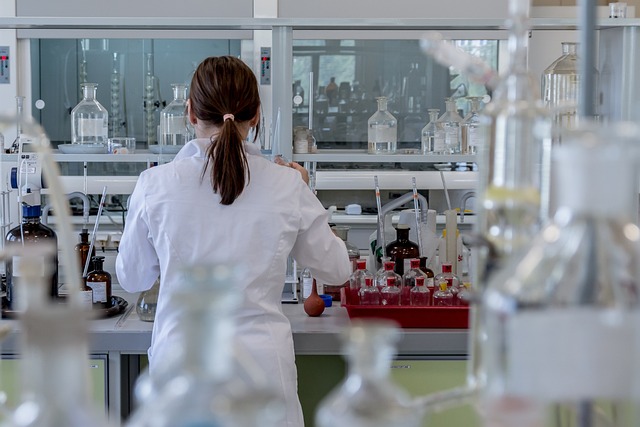
Second Semester Chemistry
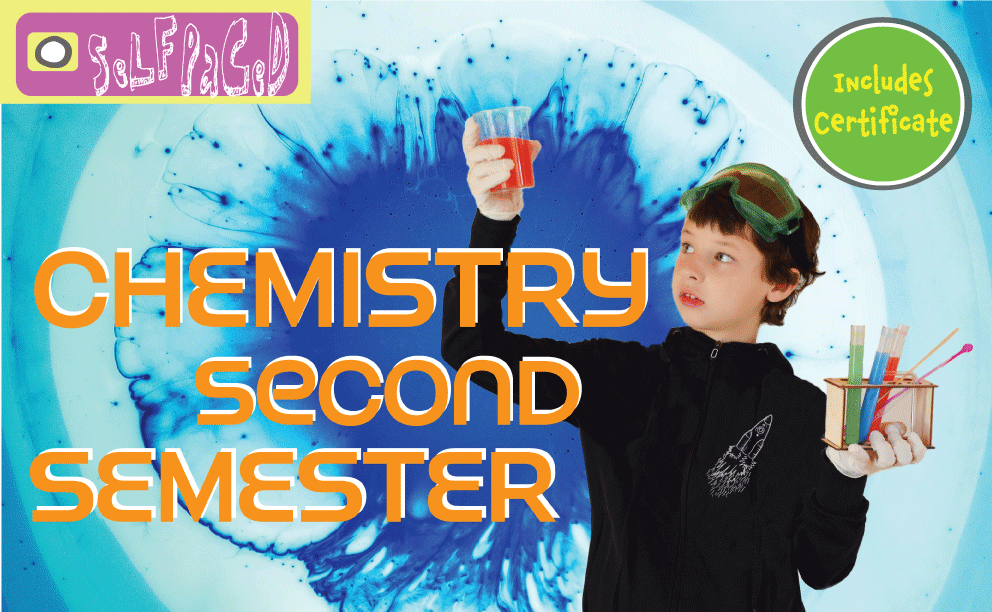
Chemistry Videos Topics: Introduction to Chemistry Course
Lesson 1: Getting Started
Learn about how brain science (neuroscience) relates to learning chemistry for homeschoolers. Learn to learn the easy way!
Lesson 2: Periodic Table, Subatomic Particles, Charge
A core lesson about “reading” the periodic table to understand atoms, elements, subatomic particles, protons, electrons, valence electrons, neutrons, charge, atomic number, mass, atomic structure, metals, transition metals, and periodic trends. We’ll learn about the differences between pure, neutral elements and their impure, non-neutral forms, known as ions.
Lesson 3: Isotopes, Average Mass
We’ll explore the neutron further, leading to the understanding of isotopes. We will learn about the concept of averages in science, and specifically average mass (the mass number, or atomic mass) on the periodic table.
Lesson 4: Aufbau Diagrams, Ionic Compounds
We will learn about electron configurations, Aufbau diagrams, electron spin, the Pauli exclusion principle, Hund’s Rule, quantum numbers, the octet rule for ions, and simple binary ionic compounds, commonly known as the salts and minerals found on Earth.
Lesson 5: Electron Dot Diagrams, Molecules
We will learn to draw molecules (it’s fun), using dot diagrams and Lewis structures. We will learn about the octet rule for neutral nonmetal atoms, sigma bonds, pi bonds, single bonds, double bonds, and triple bonds.
Lesson 6: Polarity, 3D Shapes with Balloons Lab Demo
We will learn about polarity for neutral molecules. There is a hands-on experiment to observe the 3D shapes of molecules (VSEPR theory). This optional activity is Dr. Scott’s personal favorite experiment.
Lesson 7: Acid-Base Neutralization
We will learn about acids, bases, and the reactions between them, known as a neutralization reaction. We will learn about Arrhenius acids, Arrhenius bases, organic acids, and monoprotic acids, diprotic acids, and triprotic acids.
Lesson 8: Precipitation, States of Matter
Will will learn about the states of matter (solid, liquid, gas, and also aqueous solutions). We will discuss solubility, dissolution, and precipitation reactions, in which a solid appears out of a solution. There’s a lab demo video with a dramatic reaction… and a decent joke too.
Lesson 9: Reduction-Oxidation (RedOx)
We will learn about redox reactions for the transition metals, reduction half reactions, oxidation half reactions, reducing agents, oxidizing agents, and electron transfer. We will learn how redox relates to biochemistry, electrochemistry, and metals reacting with acid.
Lesson 10: Mole Ratios
We will learn about moles (mol), the fundamental unit for chemicals. The idea will extent to mole ratios for which chemicals react, formally known as stoichiometry.
Lesson 11: Molar Mass, Rounding
We will learn about molar mass, also known as molecular weight. This key concepts allows us to measure chemicals in a lab to perform experiments with correct mole ratios. We will learn to apply precision and rounding to measurements and stoichiometric ratios.
Lesson 12: Limiting Reactants Experiment
We will put it all together for a scientific experiment featuring an acid base reaction that generates gas. There’s a big emphasis on the safety of experiments from the perspective of professional scientists, so that learners are prepared for future lab work. Learners will make a report and optionally repeat the experiment at home as the final course project.
Chemistry Videos Topics: First Semester Chemistry Course
Lesson 1: Binary Ionic Compounds, Emission Spectra
We’ll learn about ions and binary ionic compounds, using the octet rule. We will learn about EM waves and line emission spectra for elements.
Lesson 2: Absorbance, Polyatomic Ions
We’ll learn about polyatomic ions and general ionic compounds We will learn about absorbance for EM waves.
Lesson 3: Electronegativity, Lewis Structures
We will learn the theory behind covalent bonding and it’s connection to Pauling electronegativity. It’s probably the most important concept in all of chemistry!
Lesson 4: Polarity, Resonance
We will learn about polarity and resonance for molecules.
Lesson 5: 3D geometry (VSEPR) with Balloons Lab Demo
We’ll apply valence shell electron pair repulsion theory (VSEPR) to determine molecule shapes. There’s a hands-on experiment to make the shapes using balloons. It’s Dr. Scott’s personal favorite experiment.
Lesson 6: Dissolution, Homogeneity, States of Matter with Salt-Sand Separation Lab Demo
We learn about solution chemistry and the states of matter. There’s an experiment to separate salt and sand using changes of state.
Lesson 7: Intermolecular Forces (IMFs) with Mixing Liquids Experiment
We learn the theory of strong and weak attractions between molecules, known as intermolecular forces (IMFs). There’s an experiment to mix liquids to evaluate the principle of Like Dissolves Like.
Lesson 8: Water, Hydrogen Bonding, Boiling Points with Freezing Water Experiment
We learn some advanced IMF theory, including hydrogen bonding and the expansion of freezing water. There’s an experiment to measure freezing water expansion.
Lesson 9: Three Experiments and Lab Reports
We discuss lab reports and Dr. Scott provides help for recording data from and designing experiments.
Lesson 10: Balancing Chemical Reactions
We learn to balance chemical reactions for combustion, neutralization, and other types of reactions.
Lesson 11: Mole Ratios, Biochemistry with Soap IMFs Lab Demo
We look at large, biochemical molecules including soap and fats. There’s a hands on activity to see and feel how soap works.
Lesson 12: Limiting Reactants, ICE Tables
We learn to make limiting reactant calculations and use an ICE table to predict the outcome of chemical reactions.
Lesson 13: Lab Reports
We continue to work on 2-3 lab reports and experiments as a final course project.
Lesson 14: Molarity, Neutralization Reactions, pH, Gas Producing Reactions
We learn about concentration, called Molarity or capital-M in chemistry. We focus on neutralization reactions, including carbonate and gas releasing bases. We have a brief conceptual introduction to pH.
Lesson 15: pH Indicator & Kitchen Titration Experiments
The final topic and experiment is titration. We have a simple version you can set up easily and safely in your kitchen (optional). We will discuss and make indicator solution.
Chemistry Videos Topics: Second Semester Chemistry Course
Lesson 1: pH and 1-into-10 Dilutions
We learn about pH and dilutions.
Lesson 2: Dilution Factors, ICE Tables and % Acid Dissociation
We learn about dilutions factors, ICE tables, and percent dissociation for acids.
Lesson 3: Strong acids, weak acids and pKa
We learn about strong and weak acids and tabulated pKa tables.
Lesson 4: Strong bases, proton acceptors, neutral salts
We learn about strong and weak bases as proton acceptors (Broenstead-Lowry bases). We learn about salts being either neutral or basic.
Lesson 5: Conjugate acid-base pairs, pKb and pOH
We learn about conjugate acid and conjugate bases that exist as conjugate pairs. We focus on writing proton acceptor and proton donor reactions. We discuss pKb and pOH for bases, much like pKa and pH for acids.
Lesson 6: Neutralization Reactions & Titration Curves
We learn about titration curves, plotting the pH as an acid-base reaction proceeds past the endpoint of titration.
Lesson 7: Buffers and Shifting Equilibria
We learn about making buffer calculations and preparing buffers. We learn about shifting equilibria and the Le Chatelier principle
Lesson 8: Vapor-Liquid Equilibrium
We shift topics to learn about the equilibrium that exists between a liquid and the vapor over it’s surface, an extremely common situation on Earth. We learn to read steam tables and vapor pressure data.
Lesson 9: Measuring Pressure
We learn about pressure conceptually and scientifically.
Lesson 10: Experiment to Measure the Gas Constant R
We do an all time classic experiment to collect gas over water, correcting for the vapor pressure of water. We calculate the Gas Constant R from experimental data from a simple kitchen setup.
Lesson 11: Analyzing Gasses
We learn more about the gas laws, the Joule-Thompson cooling effect, and the design of internal combustion engines using PV diagrams.
Lesson 12: Filtration and Thermal Degradation
We consider thermal degradation with oxygen (combustion) and without oxygen (pyrolysis). We discus the products, including charcoal, or pure carbon. We perform an experiment to use activated carbon as a filtration medium to separate contamination from water.
Lesson 13: Kinetics & The Iodine Clock Reaction
We do the iodine clock reaction, a true dazzler in the world of chemistry. We’ll do a simple and safe kitchen version, and we’ll get introduced to rates and chemical kinetics.
Lesson 14: Kinetics and Equilibrium
We will see the theoretical connection between equilibrium and rates for chemical kinetics. It’s a major, over-arching theory that connects many of the big ideas in chemistry. We’ll make reaction diagrams showing the activation energy and enthalpy or heat of reaction.
Lesson 15: Electrochemistry
We get an introduction to electrochemistry, and we build a battery (voltaic cell or also called a Galvanic cell) using a fruit or vegetable such as a potato.
